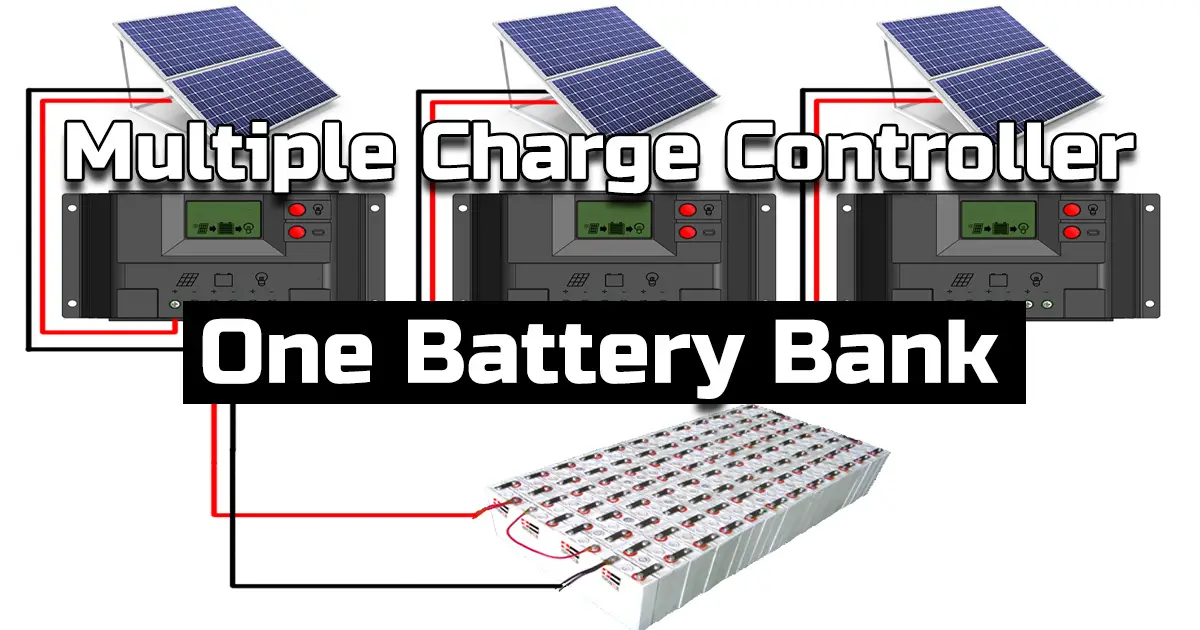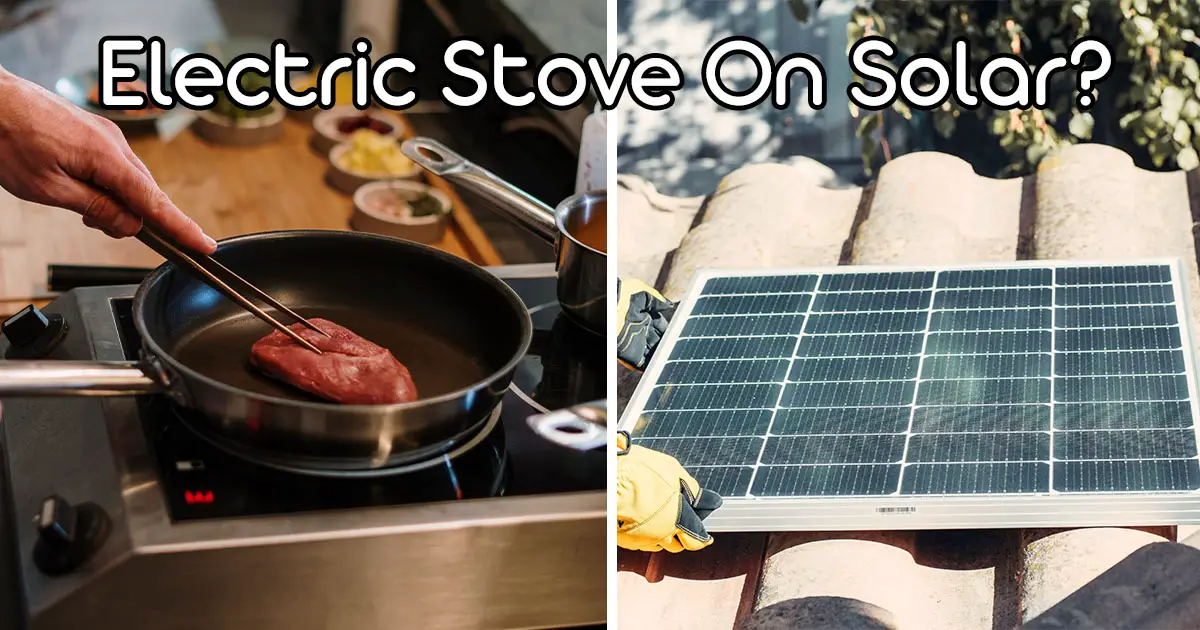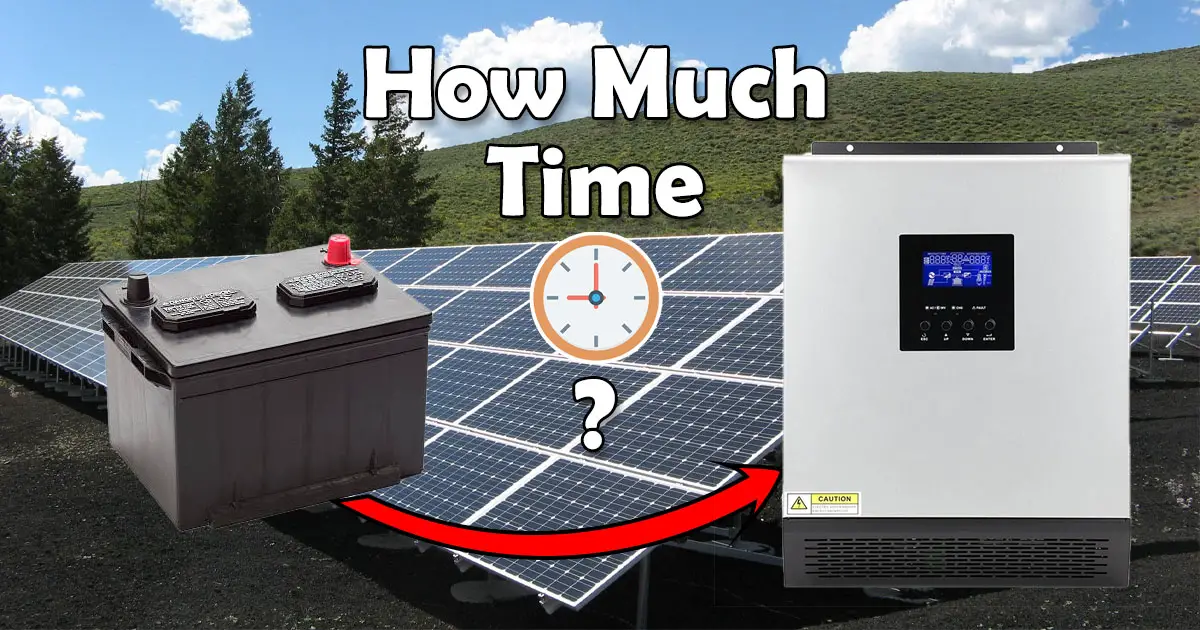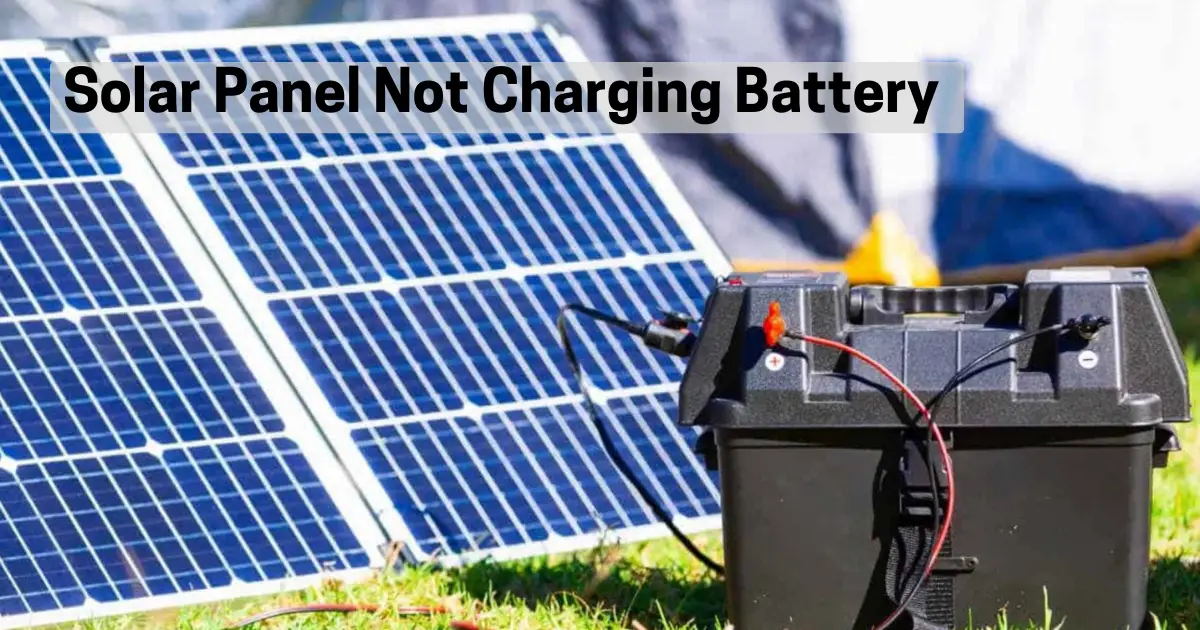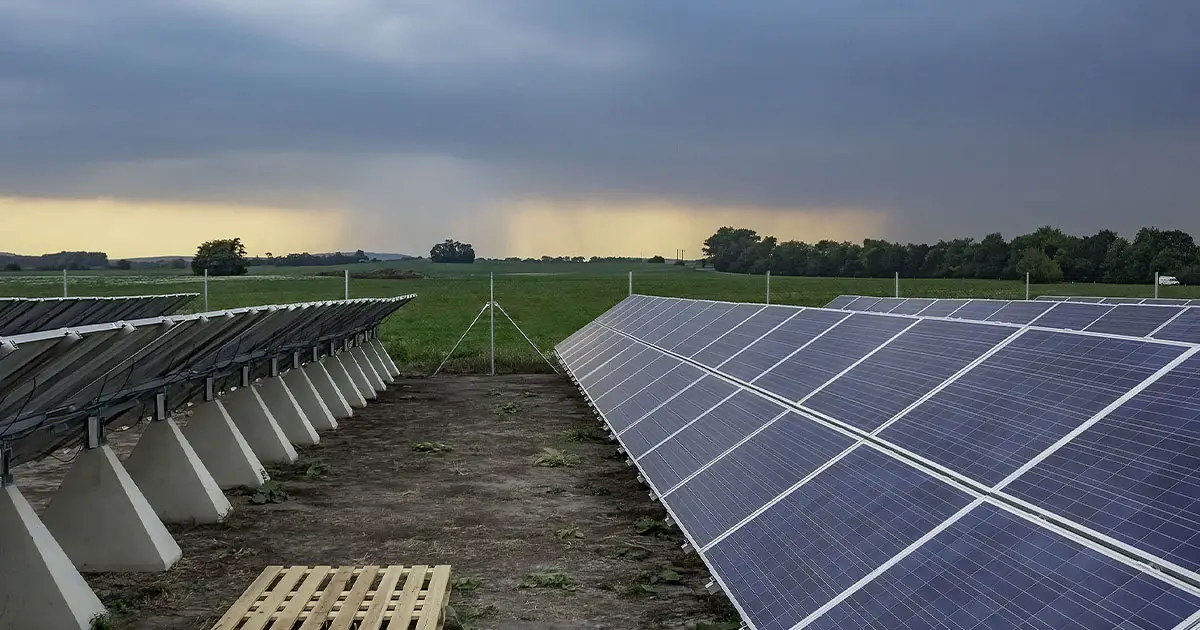A solar charge controller is an essential part of any solar power system. It regulates the power, current, and voltage supplied by solar panels array to the battery bank. However, sometimes you might need multiple charge controllers in your system. But is this practical? And how do we connect 2 solar charge controllers to 1 battery bank?
The 2 charge controller’s outputs must be connected in parallel to the battery bank. This will ensure that the total voltage delivered to the battery bank is not changed. These controllers must be connected to separate solar panel arrays. This process could be done with as many controllers as needed.
Connecting multiple charge controllers to your battery bank is an easy process that is both practical and useful in many situations. But what are these situations, and when should we have multiple charge controllers?
Reasons To Use Multiple Charge Controllers
To connect a solar array to a charge controller, you must respect its specification limits. Each solar charge controller has a limited range of voltage and current. So the connected solar array must be within this range. Knowing this information, we reached the first reason to use multiple solar charge controllers:
1. Adding More Solar Panels
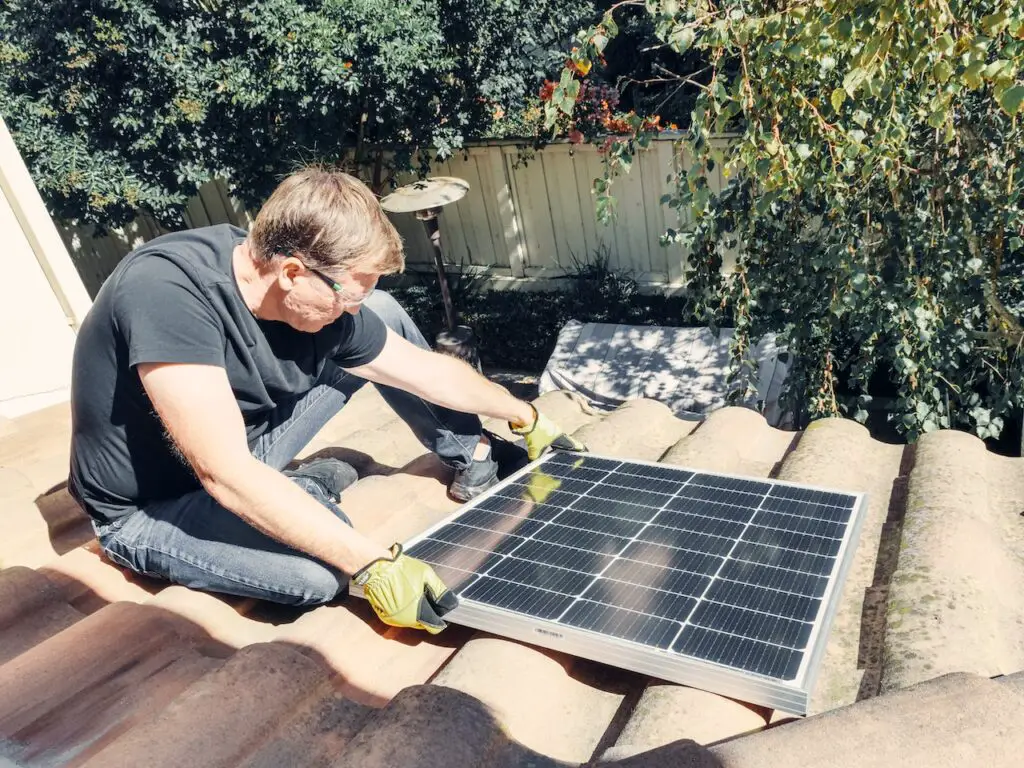
If you are willing to add more panels to your solar system, then using multiple charge controllers is a good step. This means you will have more power to use in the morning and more power to be stored in the battery bank. However, if your charge controller has already reached its limit, you will need another one to add any additional solar panels to it.
2. Mixed Solar Panels Specs

You might find yourself in a situation where you need to connect different specs solar panels to your charge controller. However, this mix of specs is not efficient. Fortunately, multiple charge controllers will solve this issue.
Connecting different specs solar panels together either in series or in parallel will lead to some loss in the total power produced by the array. This could be completely avoided by using multiple charge controllers and splitting solar panels into multiple arrays having the same specs.
3. Different Shading Conditions
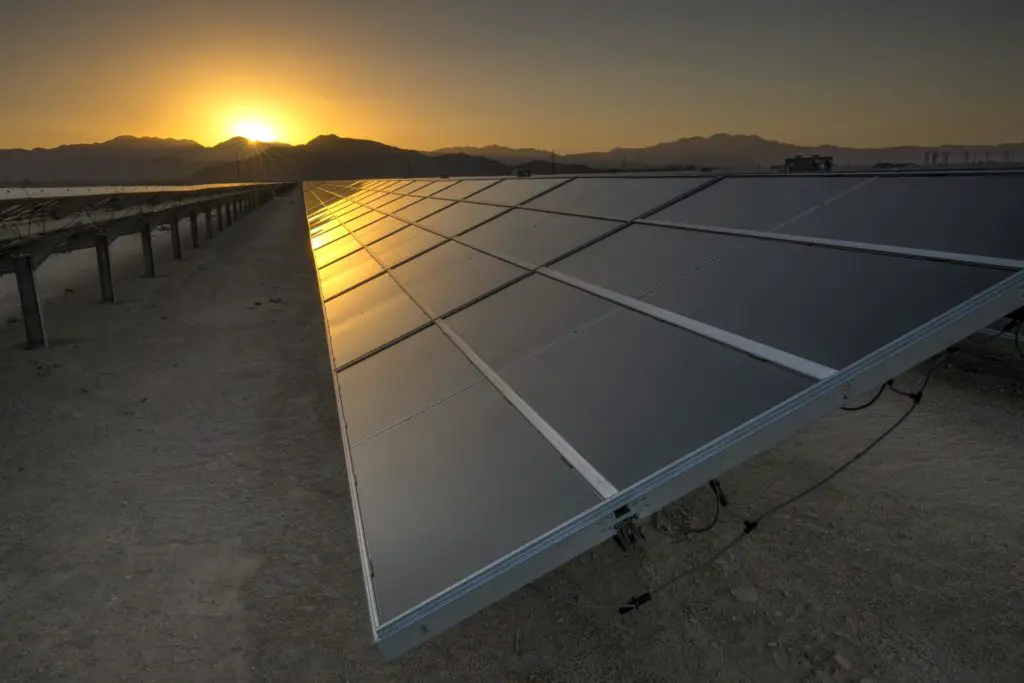
If you live in a place where the shadow is changing location during the day, then having your solar panels distributed in different locations is the best solution. However, connecting all these panels is inefficient since shading on one or more panels will lead to a total power loss in the whole array.
Having multiple arrays in different locations connected to a separate charge controller will be a practical solution.
4. Increasing Battery Bank Capacity
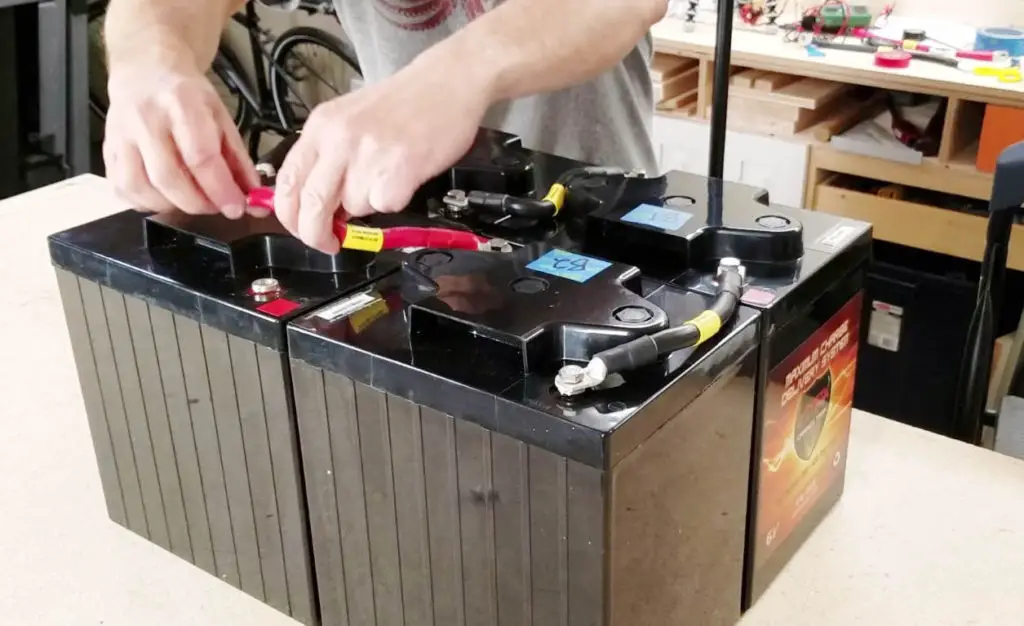
Suppose you already have an established functioning solar power system. In that case, you might find yourself producing a lot of power that is wasted and not stored due to the small battery bank capacity. This will eventually lead to an increase in the battery bank capacity; thus, you will need more current to charge your battery bank.
In this case, having multiple charge controllers to charge the battery bank would be a good choice. This will provide the batteries with the same voltage but a higher current.
Whatever your case or reason is, you are willing and in need of using more than one solar charge controller. So, let’s find out how we do this.
How To Connect Multiple Charge Controllers To The Same Battey Bank
Connecting multiple charge controllers (2 or more) to the same battery bank is a very precise process. The solar charge controllers must all be connected in parallel before connecting them to the battery bank, which is very important.
These are the steps that must be followed to connect multiple charge controllers to one battery bank:
1. Each Panels Array Connected to a Charge Controller
First of all, you must determine the specs of your controllers and the solar panels. Then you will have to connect the solar panels in an array (whether it is a series connection or a parallel connection) to the charge controller. This will always depend on your controller specs and the panel’s output voltage and current.
So, for example, if we take a look at the Renogy Rover 60 Amp MPPT Solar Charge Controller, this controller could handle voltage from the panels up to 150 volts and maximum power for 12-volt battery bank system up to 800W. Now, if we are going to use the 100 Watt 12 Volt Monocrystalline Solar Panel by Renogy also, then we could connect up to 6 panels in series to the controller.
Because these panels have a maximum output voltage of 24.3v, which means we should use no more than 6 panels in series (150v/24.3v = 6.17 = 6 panels). We are also in the accepted range of maximum power of the controller (600W < 800W).
After successfully connecting your solar panel arrays to your controllers while respecting the specs for each part, it’s time to get to the next step.
2. Connect The Charge Controllers in Parallel
After we connect each controller to its specific solar panel array, it’s time to connect the output terminals for each controller to each other in parallel. Take a look at the following image to understand more:
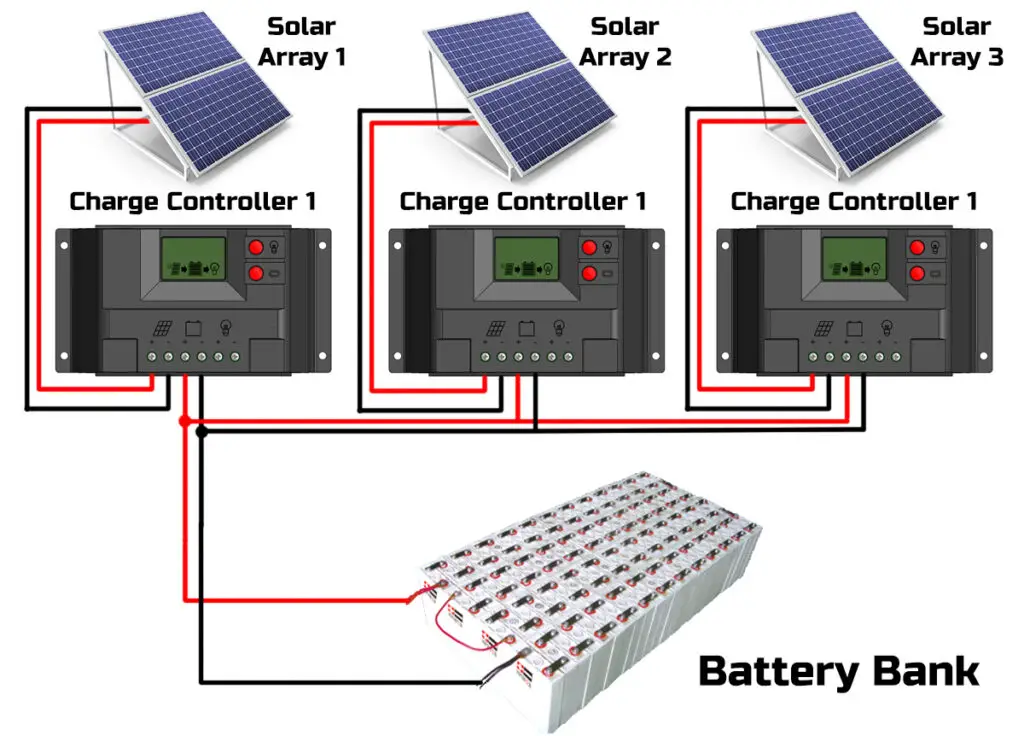
Why in parallel, you might ask. Simply because we want the output voltage to be always regulated according to our battery bank requirements and to have the current added up. In this way, we ensure that all the controllers communicate successfully with the battery and provide it with the required voltage.
In the above picture, we had connected 3 charge controllers to the same battery bank, however, you could do the same with 2 controllers or even more than 3. But still we need to take care of one more point. You must consider how much current is provided to your battery bank so you don’t over charge it and destroy it.
3. Total Charging Current Supplied
Now that you have set up your charge controllers and are ready to connect them to your battery bank, you must know exactly how much current is supplied to the bank. Since the controllers are connected in parallel, the voltage will be the same but the current is added up.
In order to be in the safe side you must find the recommended charging current for your battery type from your battery’s manufacturer. However, most manufacturers recommend about 25% of the battery bank capacity as a charging current. This might vary depending on the manufacturer and the battery type (lithium batteries usually have a higher charging current).
So if you have 5 100Ah lead-acid batteries connected in series, then the total capacity of the battery bank will still be 100Ah, but the voltage will be added up. This means that the maximum charging current that your charge controllers must provide to the bank is:
Maximum Charging Current (A) = Bank Capacity (Ah) x Charging Percentage
Maximum Charging Current (A) = 100Ah x 25% = 25A
On the other hand, if your batteries were connected in parallel, then the total capacity of the battery bank will be 500Ah (100Ah + 100Ah +100Ah +100Ah + 100Ah) and the voltage will stay the same. This means that the maximum charging current that your charge controllers must provide to the bank is:
Maximum Charging Current (A) = Bank Capacity (Ah) x Charging Percentage
Maximum Charging Current (A) = 500Ah x 25% = 125A
FAQ Section
Q: Can you run 2 MPPT controllers together?
A: Yes, you can run and connect 2 MPPT controllers together by connecting them in parallel.
Q: Can you use multiple solar charge controllers?
A: Yes, you can use multiple (2 or more), solar charge controllers by connecting them in parallel.
Q: Can you mix PWM and MPPT charge controllers?
A: Yes, you can mix between PWM and MPPT charge controllers if you respect the requirements of your battery bank, solar panels, and controllers. The controllers must be connected in parallel.
Q: Do you need multiple charge controllers?
A: Usually, you don’t need to use multiple charge controllers, but if your controller has reached its maximum acceptable amount of panels and you need to add more, then using another charge controller is a good option.
Conclusion
Using multiple charge controllers could be very useful when expanding your solar power system, either when increasing the solar panels or the battery bank capacity. It is also useful when implementing different types of solar panels from various manufacturers with different specs. However, this process must be done with high precision and follow the steps provided in this article.
This video might be helpful for you if you still not able to fully understand how to do this connections:

